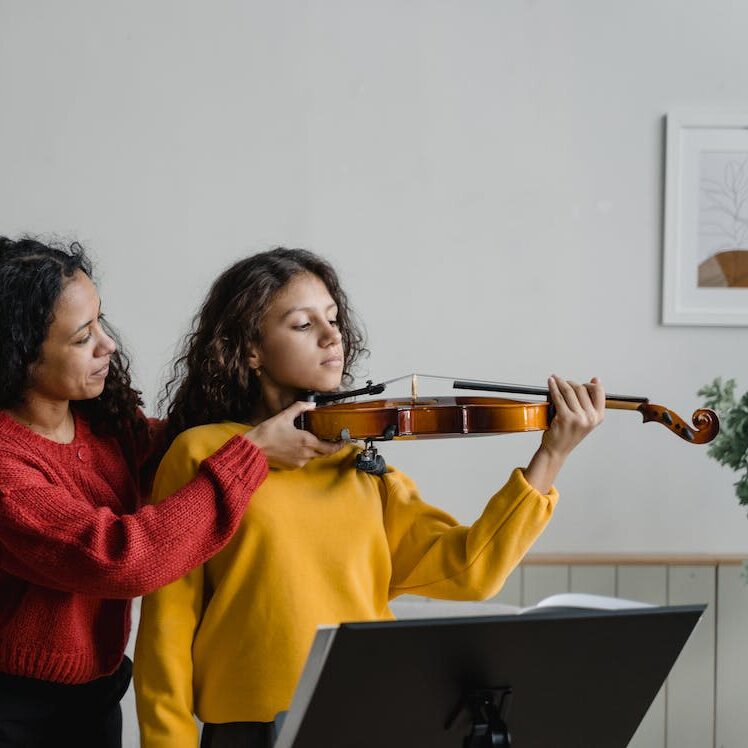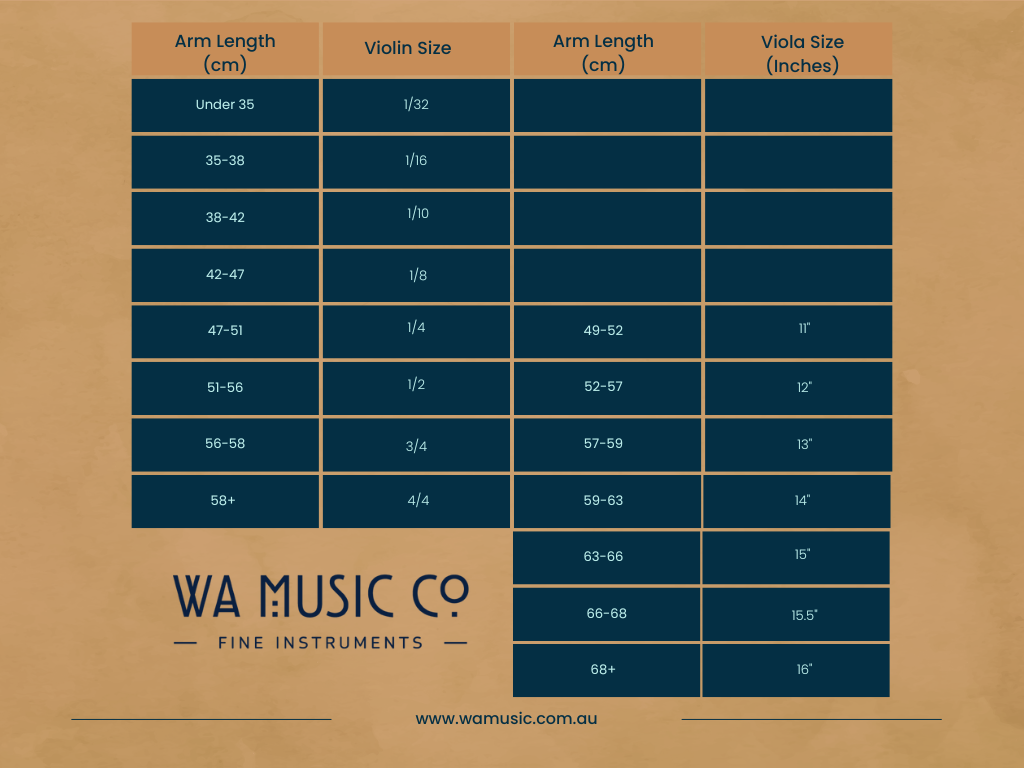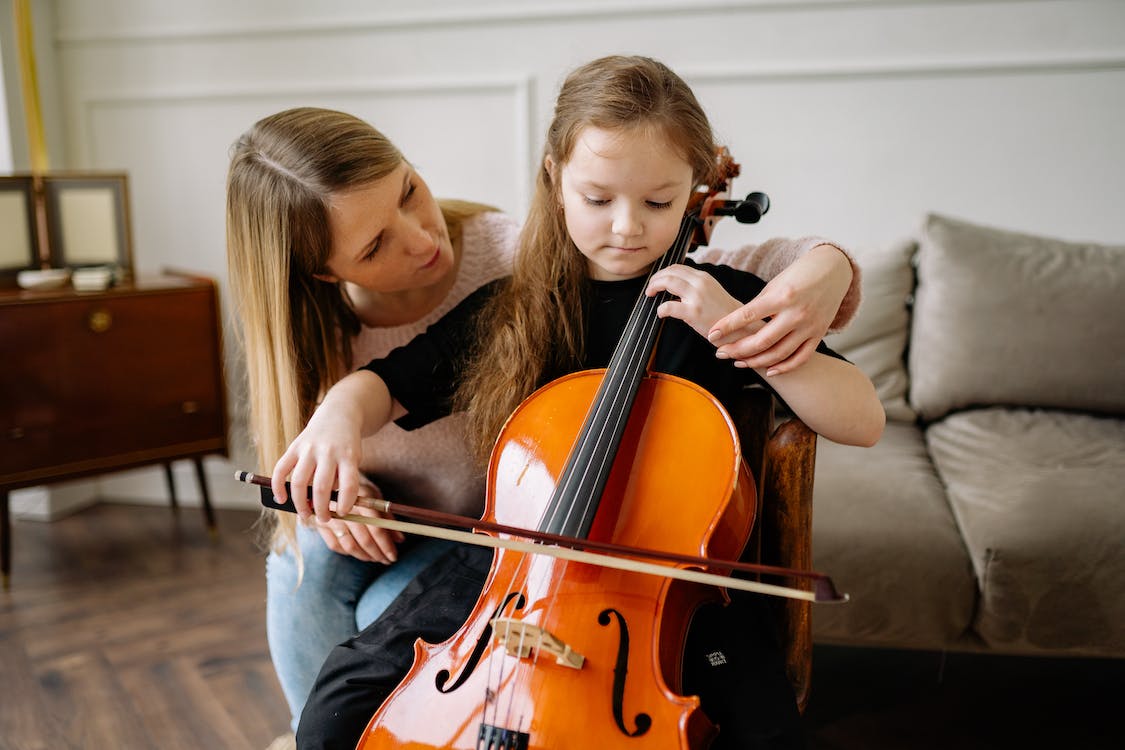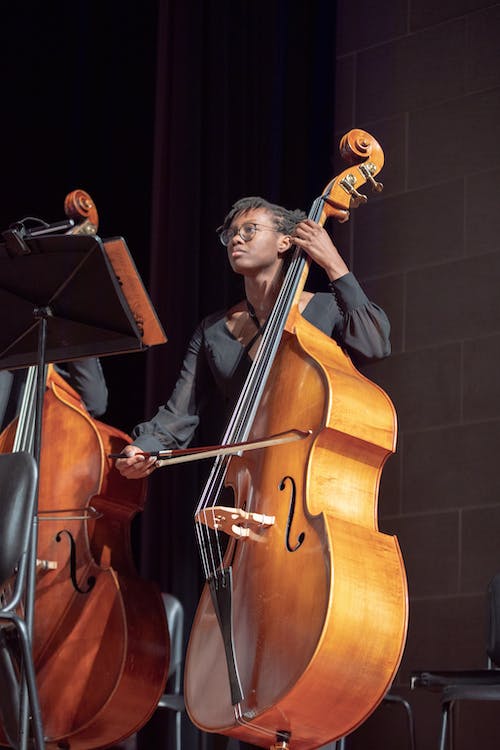How do I choose the right size violin, viola, cello, or double bass for my child?

Choosing the right size string instrument for your child can be a daunting prospect. We here at WA Music are more than happy to give you a hand. Coming in store and letting one of our friendly staff ascertain the correct size instrument for your child is always an option. There’s always time for a size-up before you select your instrument!
We often receive many questions about instrument sizing.
‘How do I know which size instrument is best for my child?’
‘What do I need to measure to know what size is best?’
‘If they’re on the cusp of two sizes, is it better to go for the smaller option or select the next size up?’
‘How will I know when my child has outgrown their instrument?’
Not to worry- we’re here to help! Choosing the right size string instrument for a young performer is something we here at WA Music have plenty of experience in.
Which size instrument is best for my child?
You can measure your young musician according to our size charts below! Depending on the instrument, you’ll need to ascertain either arm length, height, finger span, or a combination of the three. Otherwise, you are more than welcome to visit our store! All of our friendly staff members have been trained in sizing children for string instruments.
How do I know when my child needs a bigger size?
Your child’s instrumental tutor should be able to tell when it’s time up upsize. However, if they look like they’re ‘hunching’ or complaining about intervals being too close together, it may be time to consider a larger instrument.
If your child looks to be on the cusp of a bigger size, don’t rush to upsize! It’s always better to go for the smaller of the two. It’s much easier to play on an instrument that is too small rather than too big, and playing on a smaller instrument reduces the risk of strain and injury.
How long should my child be on this size instrument?
Choosing the right size string instrument is a dynamic process. As a general rule of thumb, a child will stay on one size for anywhere between eighteen months to two and a half years. However, every child is different! Some will stay on one instrument longer, and others will fly through the different sizes as they grow.
Choosing the Right Size String Instrument: Sizing for Violin/Viola

Violins and violas are sized according to arm length rather than height or hand size. Have your child extend their left arm with a straight elbow and outstretched palm. This will be at the angle at which a violin/viola is held, roughly 45 degrees, or 10 o’clock.
Measure from the center of the palm (you may want to draw a small dot here) to the base of the neck. This will be equal to the length of the instrument. Do this three times to ensure consistency of results- some children hyper-extend or bend slightly, so you’ll want to triple check your measurement!
Compare your results to the chart below!

Choosing the Right Size String Instrument: Sizing for Cello

Sizing a child for a cello is slightly more complicated, and involves considering the height, arm length, and splayed finger span (from pinky to ring finger) of the child. You can compare your measurements with the table below to find the best size instrument for your young cellist.
When a player is seated, a properly sized cello should sit with the upper edge of the instrument against the middle of the chest. The lowest tuning peg should sit slightly below the left ear, and the lower corners of the cello slightly above the inside of the knees. Consequently, the player should be able to comfortably reach both ends of the fingerboard.

Choosing the Right Size String Instrument: Sizing for Double Bass

Sizing a child for a double bass is best done by determining the height of the player. You may be wondering why a ‘4/4’ bass has not been included in our chart below. Great question! A 3/4 double bass is considered the standard size for most adult players. ‘Full-size’ or 4/4 basses are rare in comparison.
A properly-sized double bass should stand with the bridge at the same height as the large knuckles of the player’s right hand. The fingerboard nut should be at eyebrow level.

Got any questions?
We here at WA Music are more than happy to help you size up your child for an instrument!
If you have any questions at all, free to ask one of our friendly staff members any questions you may have! You can reach us at (08) 9244 9559 or sales@wamusic.com.au.
